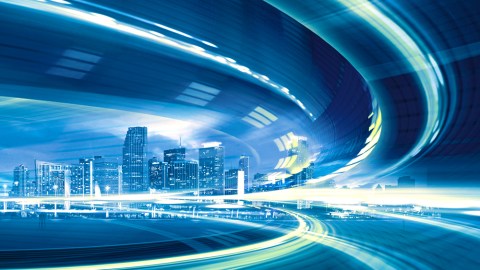Is the Hyperloop the Future of Transportation?

If you thought the concept of people traveling between cities – or even across the nation – in a matter of minutes was just a bit of Jetsons science fiction fantasy, wait until you hear about the mysterious Hyperloop from Elon Musk – a man that some now consider to be the world’s greatest living entrepreneur. At the recent All Things D conference, Elon Musk spoke cryptically about a revolutionary new form of transportation that’s one part Concorde, one part railgun, and one part air hockey table. And, according to Musk, it could forever change the way we think about transportation.
So what do we know about this Hyperloop? The essence of the idea, as described at All Things D, is that it would be a super-fast, super-efficient form of transportation that would be capable of whisking passengers from downtown Los Angeles to downtown San Francisco in less than 30 minutes. If true, it would make it faster than the current bullet train planned for the region. Last November, at an Economist innovation awards event, Elon Musk also noted that the Hyperloop would be unscheduled, “weatherproof” and “crashproof” – passengers would get on and off without having to wait for service. Musk has been tied up with Tesla (one of his other ventures, in addition to SpaceX), but promised to release more details after June 20.
So how exactly would it work?
According to Jay Yarow of Business Insider, the most likely inspiration for what Musk might have in mind comes from a 1972 paper written by a physicist for the Rand Corporation. With the disarmingly simple name of “The Very High Speed Transit System,” R.M. Salter proposed an underground tube that would send passengers from New York to Los Angeles in 21 minutes. There was even mention of a tube-like network that could connect various points of arrival and departure in a vast nationwide transportation network. To do so, it would rely on a system of electromagnetic levitation and propelled cars being sent through vacuum tunnels at unheard-of speeds of close to 14,000 miles per hour.
Since Elon Musk has ruled out the idea of using underground vacuum tubes for the Hyperloop, what are the other options? Over at Gizmag, Brian Dodson ran through a list of other known concepts that could become the basis for the Hyperloop, such as the Lofstrom Loop (a system for launching payloads into space) and a Pneumatic Transport System (PTS).
Who knows? At SpaceX, Elon Musk is heavily involved with creating new technologies for space travel and exploration, and might have stumbled across a new technology for rapid, high-speed transportation. One such out-of-this-world concept might be the “xenon ion engine” that NASA claims to be building, capable of sending a robot-controlled spacecraft capable of hurtling through deep space at 200,000 miles per hour. According to NASA space officials, the technology has finally caught up to the dream. Currently, the space shuttle concept is only capable of flying 20,000 miles per hour.
Of course, there is the off-chance that the Hyperloop is just “insane” – a bit of megalomaniacal posturing by a serial tech entrepreneur who finally met a technological problem he couldn’t solve. Even if the super-fast Hyperloop technology existed, after all, how would you go about building a massive nationwide infrastructure system capable of transporting cars all over the country? Talk about The Big Dig. And, if it involves something like a Concorde flying overhead, U.S. regulators would have a field day creating roadblocks for his plans.
But just imagine the possibilities if Musk really is right. What if it’s really possible to build a Hyperloop? What if the Hyperloop somehow integrated the Tesla electric car concept, a nationwide network of charging stations, and existing transportation infrastructure into something radically new and different? One thing is certain – our nation’s transportation infrastructure is badly flawed now, whether it’s planes, trains or automobiles. Here’s hoping that Elon Musk’s Hyperloop can lead the U.S. into a brave new age of transportation that’s cheap, fast, weatherproof, crash-proof and always on time. If anyone can do it, it’s Elon Musk.
image: Abstract Hyperloop / Shutterstock




